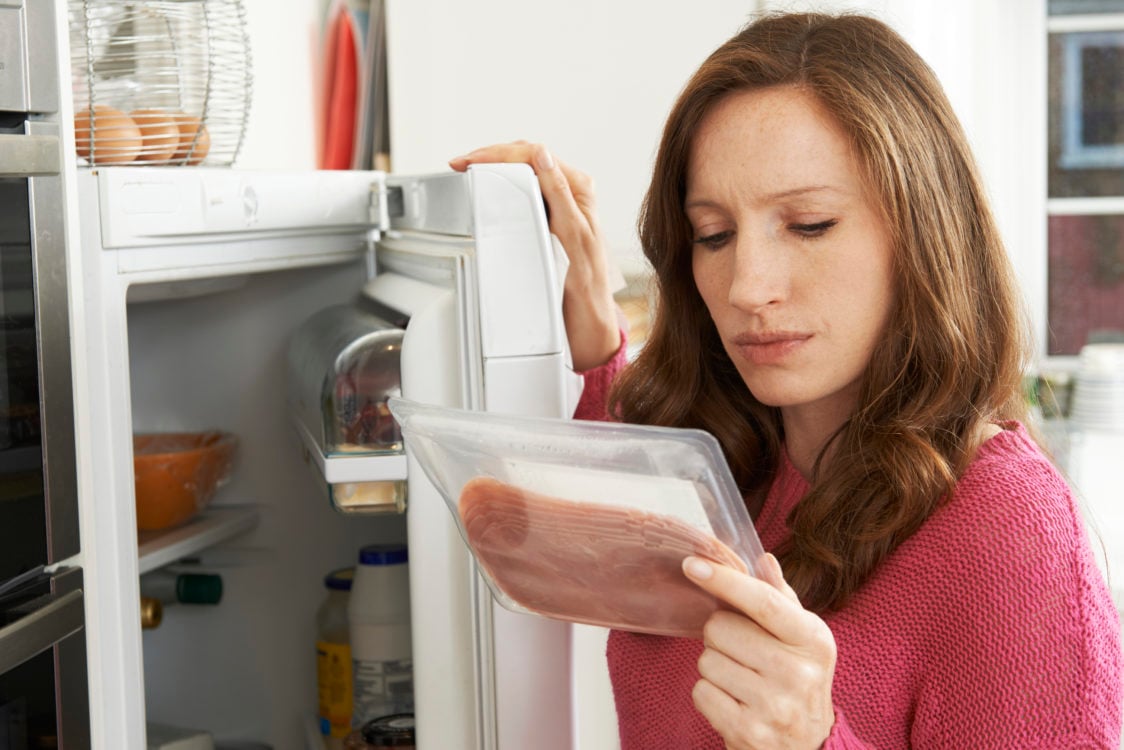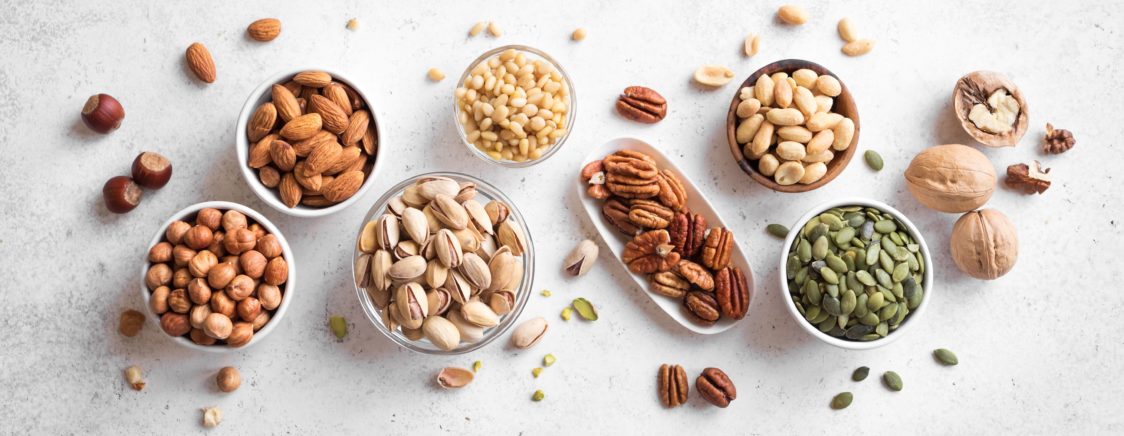Table of Contents
Deciding on a healthy grocery shopping is a great start. However, the problem can arise once you arrive at the store and find that you don’t really know how to choose the right foods. Chips, fries, candies or chocolate bars displaying all colours will probably end up in the basket again. Instead of the joy of making the right choice, you’ll probably be caught up in remorse and a sense of shame when you see the pile of sweets and processed foods on the checkout belt.
Don’t worry, you’re not the only one still in the dark when shopping. In order for everything to go well next time, we have prepared seven simple tips that will make your food choices easier. Thanks to these, you will learn to read labels, choose the right foods, and in addition, you will discover a system that will not leave you with a quantity of uneaten food at home.
1. Keep order in the pantry
If you want to shop efficiently and always have healthy food at hand, it is essential to start by putting in order your pantry, fridge, freezer and all the shelves where you store food. During this general clean up, get rid of everything that is already past its expiry date and not suitable for consumption. At the same time, you’ll also get an overview of what you have at home, so you won’t purchase more pasta, even if you still have 5 packs from 2010 in the back of your pantry.
It is up to you whether you prefer storing food in its original packaging or glass jars. However, always put certain types of food together (for example peas, lentils and other legumes) so that you have something to choose from when cooking. Choose a similar system in the fridge. There’s no reason for yogurt to be on all the shelves. When sorting, remember that people most often reach for food at eye level. Chips, sweets and such goodies are therefore to be placed somewhere off to the side, so that you do not see them at all when looking into the pantry.
Create separate compartments in the fridge for:
- dairy products
- ham, meat, meat substitutes such as tofu and the like
- fresh fruit and vegetables
- foods that have a longer shelf life (mustard, jams, preserves, canned foods)
- cooked food or baked buns, which must be eaten as soon as possible
Create separate compartments in the pantry for:
- side dishes, grains/cereals and legumes
- canned foods, preserves, oil, vinegar
- seasonings (wasabi, soy sauce, flavdrops, syrups) and other essential cooking ingredients
- potatoes, onions, garlic and other fruit or vegetables
- fresh and non – perishable baked goods
- nuts, sugar. flour, spices and other loose non – perishable goods
+ secret hiding place for nut butter, sweets, chips and goodies
Check the expiration date regularly for all products. It is especially ideal to use the technique practised by retailers in shops in the fridge. In the front, place foods approaching their expiration date, and in the back, those that will last for some time. When you take out yogurt for breakfast early in the morning, you don’t have to examine every tub, but simply reach for the one closest to you.

2. Plan what you will cook
If you already have your food in order, it’s not hard to know what you usually have in your pantry or fridge and what you’re missing. But don’t rely on going to the supermarket and remembering what you need to put in your basket in what amount.
Before you go to the supermarket, ask yourself a few questions:
- How many days are you shopping for?
- How many people are you shopping for?
- Do you mostly eat out, or do you prepare all your meals at home?
- What will you be cooking and what ingredients do you need?
If you do not plan in advance what meals you want to cook for lunch, it may be that you will not find all the ingredients you need at home and choose a fast-food delivery instead of a healthy meal. At the same time, keep in mind that you will not only eat the lunches you have planned at home but other meals. Therefore, supplement with other long – life and fresh foods. We’ll take a look at them in the next section.
Practical tip: A great tool can be a piece of paper placed in a visible place (e.g. on the fridge) where you can write down what you have run out of at home at any time. If you go through the pantry, you may not notice at first glance that you no longer have baking paper, soda, spices or any other food you don’t buy as often. When every member of the household writes on this paper any food and sanitary products that have already run out or are running low, you will not have anything missing at home after shopping.

3. Try not to waste food
The results of various studies show that approximately 1/3 to 1/2 of food produced is thrown away each year, which is a massive number. However, this waste not only has a negative effect on the planet, but also on your wallet. When you buy food and then throw it away, it’s like throwing hard-earned money out the window. It is not likely you would do this, would you? [3] [5]
So try to learn at least a few simple tips to reduce waste and unnecessary spending on food, which then goes into the bin:
- Check food expiration dates you have at home regularly and adjust your diet. If you have a few pieces of overripe fruit in your pantry, use them – make a smoothie, add some to your oatmeal, freeze it, bake something with it or eat them as a snack.
- “Use by” is not the same as “minimum shelf life”. For example, if you find this information on fresh yogurt that it should be consumed by a certain date, you should really eat it by that time. If there is information on the packaging of food that it has a minimum shelf life until a certain date, as a rule, nothing will happen if you eat it later. This term is usually used on food products that have a shelf life of several months, so a few extra days really does not matter. [2]
- Buy only what you really eat. Don’t stock up on fresh food. If you already bought more fruit or vegetables, put some in the fridge, where it lasts longer, or freeze as needed.
- Keep food in the pantry arranged as per the expiration date. Place the ones with the longest in the back.
- Use any cooked ingredients in your next meal. Do you have any pasta left over from lunch that you don’t have sauce for anymore? Throw in a can of tuna, yogurt, vegetables, spices, and a healthy salad for dinner is ready in a few minutes.
- Put food in the freezer that you can’t eat. Do you regularly throw away a piece of bread? Put half a loaf in the freezer. Once pulled out, it will taste almost fresh again. In the same way, you can store baked goods that you bake in large quantities. Once you don’t know what to eat for breakfast, you’ll thank yourself for freezing a portion of it.
There are many ways not to waste food. It’s up to you which one you choose. Always remember that the less food you waste, the more money you save. [4]
4. Eat before you go shopping
Now that we have a list of what we need to buy, all we have to do is go to the shops and put the written products in the basket. Sounds pretty simple? Also, it can be easy, but not if you haven’t eaten before you buy. Because your grumbling stomach will easily affect your behaviour, and so you can throw calorie bombs into the basket, which you would otherwise avoid with a wide berth. This behaviour is also confirmed by a study which examined the differences in shopping between hungry and rich people. The results show that those who were not fed bought more calorific foods than those who went to the store on a full stomach. [1]
You might be interested in these products:
5. Read and observe food packaging
If you are buying packaged foods and want to live healthily, you need to read what is written on them to be able to choose the most suitable product option. What to keep an eye on? [11]
1. Front label
Just because there’s a slim woman in a bathing suit on the front of a muesli bar doesn’t mean you’ll look the same after eating it. In the same way, you may often find light, fitness, fit or protein written on the packaging. The problem, however, is that there is no regulation for many such designations. Thus, when looking at a fitness bar, a regular customer can get the feeling that it is food that is healthy and suitable. Realistically, however, it often consists of solidified fat, sugar and many other substances whose names you have never even heard. That’s something to watch out for.
Not so long ago, light products with a reduced fat content were also very popular. However, in order for these products to have any taste, all the more sugar was used in production. The resulting caloric value between a regular product and its light version was not significantly different.
Recently, however, the light label has been rather understated as it has been replaced by the “protein” label, which should be associated with the increased protein content of a product. However, before you put a product with this inscription in the basket, compare the protein content of the product on which the protein is written and the version that does not have this word on the packaging. You may be surprised that the protein content differs by only 1g, for example, but the price is considerably higher for the “protein” version. So don’t get caught out and study the labels for yourself at all times.
2. Ingredients
There’s beauty in simplicity. And that saying is doubly true of food composition. Is the content of the individual ingredients in the bar as long as your arm? Then it’s probably not the most suitable food. Even a candy bar can be composed of only a few ingredients. When choosing, consider also that the order of the raw materials used is generally ranked according to their amount used in the product. Do you buy peach purée, for example, and apples come first, plums come second, and then you find peach aromas somewhere at the end? Then it’s not the best choice. Likewise, when you put muesli or granola in your basket, it should not be sugar but oatmeal that comes first in the ingredients list.

3. Nutritional value table
You will see a table of nutritional values on most foods, but what should you look out for?
First, focus on the weight. In each table you will find information on the amount to which the nutritional values refer (usually 100g for solid food or 100 ml for liquids). Often, however, the packaging also shows the values for the recommended portion size. For example, if we look at the ever popular chips, we can read from the packaging that the manufacturer considers 30g as the recommended portion. This weight has about 150 kcal. Does that seem like a negligible amount? With a realistic conscience, can you really stop eating after 30 grams. You probably end up eating the whole bag before the movie starts. This will increase your daily caloric intake by more than 500 kcal.
Similar surprises can show up in many foods. This can be shown by the example of one of the popular non – perishable croissants (values vary slightly according to flavours). On the packaging you will find information on how many calories and individual macronutrients it contains in 100g (447 kcal) and in 28g (approx. 125 kcal). What’s the catch? 28g is the recommended quantity per portion determined by the manufacturer. One croissant has 60g, so you need to calculate how many calories you actually consume.
Furthermore, you should keep an eye out in the nutrition table for:
- sugar content (often referred to as carbohydrates and its associated sugars) – the daily intake of added sugar should not exceed 10% of the total energy intake, if your favourite granola contains 40g of sugar per 100g of product, you’d better put it back on the shelf [7]
- salt content – daily salt intake should not exceed 5g (approx. 2-3g sodium), you may be surprised to learn that you can fill your daily salt intake by eating just 100 grams of cheese [8]
- saturated fat and trans-fatty acid content – intake of saturated fat should be less than 10% of total energy intake and trans fats should make up less than 1% of all energy intake in your diet. [9]
- ratio of individual macronutrients – the content of specific macronutrients goes hand in hand with a pure composition, for example, if you are buying cottage cheese, go for the unflavoured one to make sure that it provides a source of protein and not sugar
4. Origin of food
As far as origin is concerned, consider the country of origin of the food. Why buy imported vegetables in season when you can also get them from local manufacturers? For packaged products, you can often also find out in what conditions it was created. For example, you might notice a BIO label, which means that the product is organic. The presence of the Fairtrade logo is also common, meaning that goods also meet certain social, economic and environmental standards, i.e. people involved in its production are paid fairly for their work. [10]

6. Buy long – life and fresh sources of individual macronutrients
For all sources of specific macronutrients, we have the possibility to choose fresh or long – life sources. The home system will work by regularly buying fresh sources and at the same time you will not miss the long – life ones in the pantry, which can expand your possibilities. When you have different sources of macronutrients at home, you will see that it is not at all difficult to prepare a healthy dish from them, which will be tastier, cheaper and also more suitable than a ready-made meal from the shop.
Protein
Fresh sources
- meat, fish, seafood
- hams and other meat products
- eggs
- dairy products (kefir, milk, yogurt, cream cheese, cottage cheese)
- tofu

Long – life sources
- tuna, mussels, mackerel and canned chicken meat
- dried meat
- hams and other meat products
- tofu
- protein
- protein bars and cookies
- protein chips
- dairy products (kefir, milk, yogurt, cottage cheese)
- protein pudding
- MoiMüv Protein milkshake
- liquid egg whites
- protein pancakes
- protein bread
- legumes (lentils, peas, beans, edamame)
- buckwheat, quinoa, amaranth
- seeds, nuts and nut butters
- delicate yeast
You may have noticed that some products can be found both amongst fresh and long – life foods. How long it lasts depends on how it is processed. For example, if you buy milk from a farmer, you will get a product with a clean composition, which is intended for immediate consumption and lasts only a few days. On the other hand, long – life milk from the supermarket is, as a rule, heat treated (UHT), as a result of which microorganisms are eliminated in the composition, and the milk has a longer shelf life. If you buy a dairy product without stabilisers, preservatives and the like, keep in mind that it won’t last long in the fridge, so there’s no point in purchasing large quantities that would spoil in a few days.
If you want to discover more protein sources, you should not miss the article 20 Foods With Which You Can Easily Supplement Protein Into Your Diet.
As you can see, different macronutrients are found in different foods, so it is not difficult to create a varied and healthy diet (perhaps according to the rules of a healthy diet) that you will not get tired of. Depending on your time options, you will purchase, for example, whole wheat baked goods, butter, ham, cheese, egg, vegetables and create a quick sandwich in which all macronutrients are represented.
7. Do not buy everything in one supermarket
Nowadays, we have so many options that it would be a shame to shop in just one place. Try to make the most of local resources, support small farmers, grow your own or shop in specialized stores where the food is likely to be of better quality than in a supermarket. In recent years, so-called farm boxes, which are full of local and seasonal fruits or vegetables, have become increasingly popular.
For the purchase of long – life food, an online e-shop can be a very practical choice. From the comfort of your own home you can comfortably study the composition of the food and so you can easily choose the best option. The advantage is that you can have your groceries brought home and only go to the shop for fresh food.
What should you remember?
As you can see, buying food so that you don’t throw away leftovers, and you always have a supply of nutritionally valuable macronutrients at home, doesn’t have to be complicated at all. All you have to do is sort out the foods you already have at home, regularly buy fresh food in adequate quantities, and also make sure that you always have long – life foods in store. When buying, be careful of the composition, read both sides of the packaging and do not be afraid to use different sources. You can buy fresh products from local producers, long – life products from e-shops, where you can study the ingredients from the comfort of your home and choose the best possible option.
What about you – do you manage to consume what you buy or throw away some of the food? Share your tips on how and where to shop effectively in the comments.
[1] Tal A, Wansink B. Fattening Fasting - Hungry Grocery Shoppers Buy More Calories, Not More Food – https://jamanetwork.com/journals/jamainternalmedicine/article-abstract/1685889
[2] S.Van Boxstael a kol. – Understanding and attitude regarding the shelf life labels and dates on pre-packed food products by Belgian consumers – https://doi.org/10.1016/j.foodcont.2013.08.043
[3] Estimates of European food waste levels – https://www.fao.org/family-farming/detail/en/c/412647/
[4] Wansink, Brian a kol. – Food Waste Solutions for Homes: Shopping, Storing, Serving – and Marketing – https://ssrn.com/abstract=3171028
[5] Food loss and waste facts – https://www.fao.org/resources/infographics/infographics-details/en/c/317265/
[6] How to Understand and Use the Nutrition Facts Label – https://www.fda.gov/food/new-nutrition-facts-label/how-understand-and-use-nutrition-facts-label
[7] WHO calls on countries to reduce sugars intake among adults and children – https://www.who.int/news/item/04-03-2015-who-calls-on-countries-to-reduce-sugars-intake-among-adults-and-children
[8] Salt reduction – https://www.who.int/news-room/fact-sheets/detail/salt-reduction
[9] Healthy diet – https://www.who.int/nutrition/publications/nutrientrequirements/healthy_diet_fact_sheet_394.pdf?ua=1
[10] Fairtrade – The Definition – https://www.traidcraft.co.uk/fairtrade-the-definition
[11] How to read food labels – https://www.healthdirect.gov.au/how-to-read-food-labels



